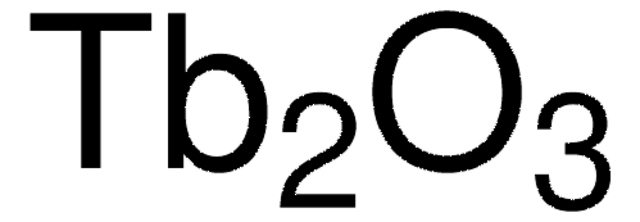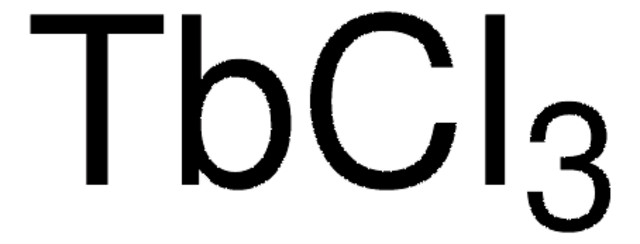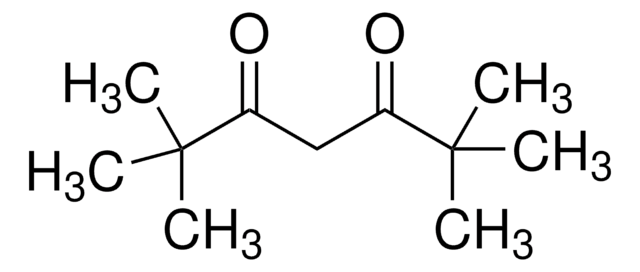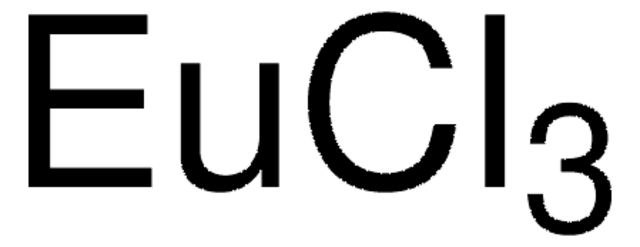212903
Terbium(III) chloride hexahydrate
99.9% trace metals basis
Sinônimo(s):
Terbium chloride hexahydrate, Terbium trichloride hexahydrate, Trichloroterbium hexahydrate
About This Item
Produtos recomendados
Nível de qualidade
Ensaio
99.9% trace metals basis
forma
solid
adequação da reação
reagent type: catalyst
core: terbium
Impurezas
≤1500.0 ppm Trace Rare Earth Analysis
densidade
4.35 g/mL at 25 °C (lit.)
cadeia de caracteres SMILES
O.O.O.O.O.O.Cl[Tb](Cl)Cl
InChI
1S/3ClH.6H2O.Tb/h3*1H;6*1H2;/q;;;;;;;;;+3/p-3
chave InChI
ULJUVCOAZNLCJZ-UHFFFAOYSA-K
Procurando produtos similares? Visita Guia de comparação de produtos
Aplicação
It can also be used as aprecursor to synthesize a label-freeaptasensor for the detection of ofloxacin (OFL) residues in the food.
Palavra indicadora
Warning
Frases de perigo
Declarações de precaução
Classificações de perigo
Eye Irrit. 2 - Skin Irrit. 2
Código de classe de armazenamento
11 - Combustible Solids
Classe de risco de água (WGK)
WGK 2
Ponto de fulgor (°F)
Not applicable
Ponto de fulgor (°C)
Not applicable
Equipamento de proteção individual
dust mask type N95 (US), Eyeshields, Gloves
Escolha uma das versões mais recentes:
Já possui este produto?
Encontre a documentação dos produtos que você adquiriu recentemente na biblioteca de documentos.
Os clientes também visualizaram
Artigos
The rare earth elements impact nearly everyone in the world. All of the people living in advanced technological countries and almost all those living in third world countries utilize the rare earths in their everyday living—the car that one drives (gasoline is refined from oil using rare earth catalysts and catalytic converters reduce the polluting emissions from the automotive exhaust), watching the news on TV (the red and green colors in TV screens), the telephones and computers we use to communicate (the permanent magnets in speakers and disc drives), just to name a few examples.
Nossa equipe de cientistas tem experiência em todas as áreas de pesquisa, incluindo Life Sciences, ciência de materiais, síntese química, cromatografia, química analítica e muitas outras.
Entre em contato com a assistência técnica













